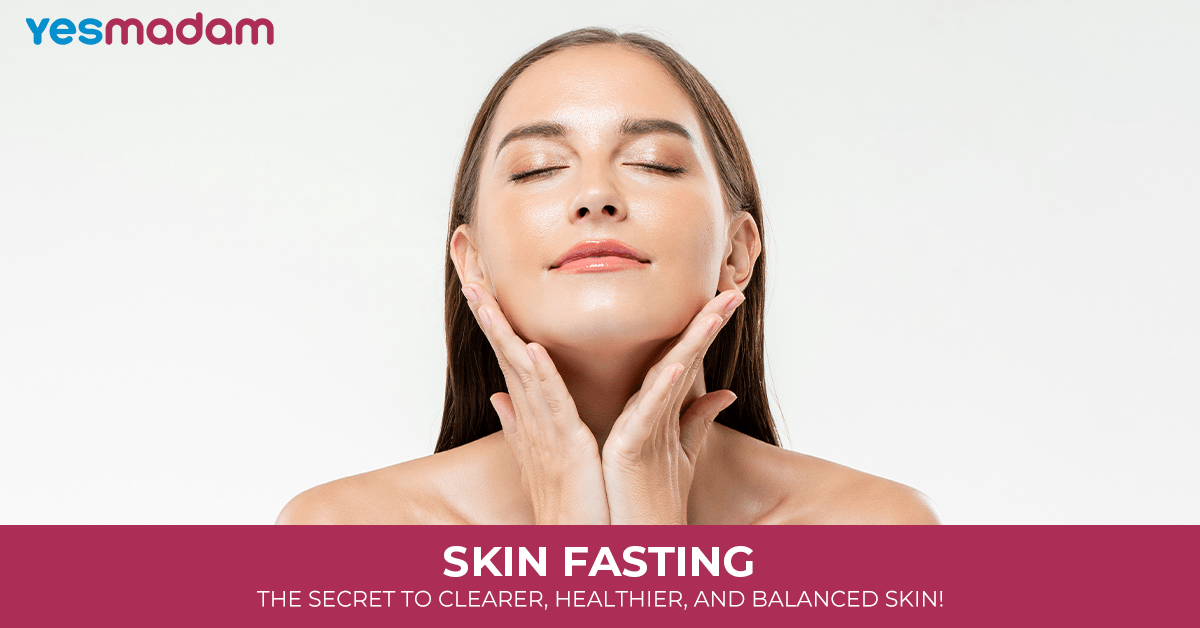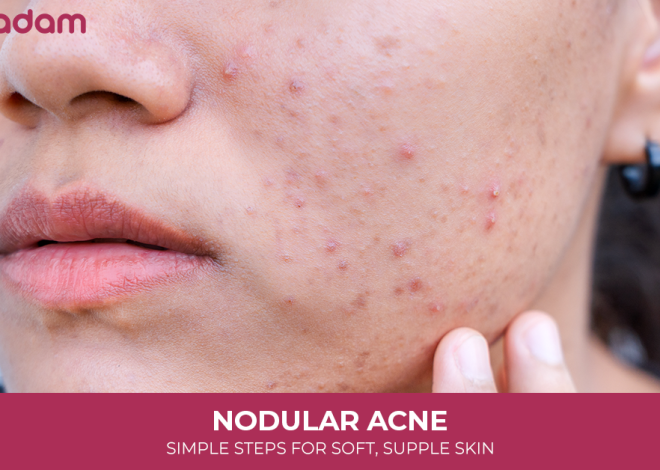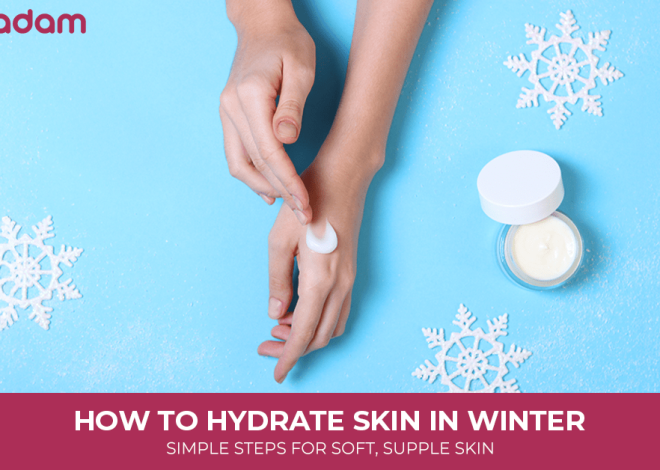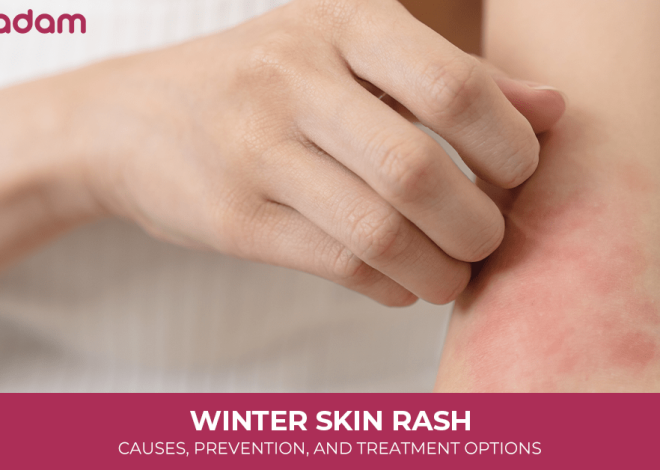
Skin Fasting: The Secret to Clearer, Healthier, and Balanced Skin!
The concept of skin fasting is gaining popularity in the ever-evolving world of skincare over the past few years and promises a path to more radiant and healthier skin tone, fewer breakouts, and a natural glow.
In this blog on skin fasting, you’ll get to explore what skin fasting is, including its types and methods, how to do it correctly, and much more.
Table of Contents
What is Skin Fasting?

Skin fasting is a method wherein you take a short-term break from your current skincare routine or products, enabling your skin to breathe and reset. Built upon the concept of minimalism, it enables your skin to naturally function the way it was intended to without relying on an overdose of skincare products. As a detox retreat, it helps reinvent your skin’s innate potential to balance, heal, and rejuvenate itself.
Referred to as‘’silent retreat, it helps in skin detox enabling it to breathe and to rebalance and revitalize its natural functions.
How Does it Work? Types and Methods
Although the concept of skin fasting is fairly straightforward, the methodology does vary from person to person. For example:
- Intermittent Fasting and Skin Health: It is similar to following an elimination diet, which involves varying levels of elimination and duration. Popular methods include the 16/ 8 method, in which you fast for 16 hours and eat within an 8-hour time duration, and the 5:2 method, which includes normal eating for 5 days and decreased calorie intake for 2. It offers benefits like:
- More radiant and clearer skin
- Reduced acne and other skin issues
- Anti-ageing benefits
- Enhanced skin hydration and texture
- ‘Less is More Skincare’ Method: This is the core focus area of this blog. It is a minimalist approach that works by focusing on fewer products and relying more on the skin’s ability to heal by itself.
More Information For You: Cucumber Face Mask
A Step-by-Step Guide on How to Do Skin Fasting
Here’s a step-by-step ritual on how to do skin fasting right:
Prepping your skin: A gentle cleansing ritual
Step 1: Choose the right cleanser: Strictly select a cleanser as per your skin type, like oily, sensitive, combination, or dry.
Step 2: Begin with clean hands: Make it a habit to wash your hands before touching your face to prevent the transfer of bacteria or dirt.
Step 3: Rinse with lukewarm water: Wash your face with lukewarm water to open up pores.
Step 4/: Cleanse gently: Squeeze a small amount of cleanser and massage on your face gently in circular motions for 20-30 seconds. Focus on T-zone areas.
Step 5: Wash thoroughly: To eliminate traces of cleanser, wash the face thoroughly using lukewarm water.
Step 6: Pat dry: Pat dry ( not rub) your face with a soft, clean towel.
The Fasting Phase: The Minimalist Concept
The fasting phase is based on the ‘’less is more’’ adage and includes :
- Skin recalibration: With bombardment of skincare products taking a backseat, the skin balances hydration levels, strengthens its barrier, and adjusts its natural oil production.
- Natural processes leading the way: Without being overburdened by heavy products, certain natural mechanisms of skin, like microbiome activity and cell turnover, get the space to breathe or function.
- Detox: Layering the products minimally help reduce build-up, helping pores to clear and your skin tone to brighten.
Breaking the fast: A gentle reintroduction of skincare products
- Begin with hydration: Re-introduce a lightweight hydrating serum or moisturisers, infused with soothing ingredients like aloe vera , hyaluronic acid, or glycerin.
- Adding one product at a time: Add one product every 3-5 days to check its effects on skin. E.g., start with gentle, non-reactive necessities a simple antioxidant serum and a barrier-repairing skin.
- Introduce actives last: AHAs, BHAs, and retinoids are some of the active ingredients that should be prioritized later in the reintroduction process.
- Maintain Sun protection: resume using a lightweight or mineral sunscreen during the day time to prevent blocking your pores.
- Check for reactions: Take into account how each new addition affects your skin. Look for signs of incompatibility like redness, discomfort, or breakouts.
Don’t Miss: Cucumber Face Mask
Fasting Benefits for Skin

Fasting can positively impact skin health by reducing inflammation, promoting cell regeneration, and potentially improving hydration and elasticity.
Here’s a more detailed look at the fasting skin benefits:
1. Reduced Inflammation:
- Fasting, particularly intermittent fasting skin tone, can lower the levels of inflammatory cytokines in the body, leading to a reduction in overall skin inflammation.
- Fasting benefits skin conditions like acne, eczema, or psoriasis, which are often exacerbated by inflammation.
2. Enhanced Skin Cell Regeneration:
- When fasting, the body can redirect energy from digestion to repairing and rejuvenating skin cells.
- This process can lead to healthier, more resilient skin with a more youthful appearance.
3. Improved Skin Hydration:
- Fasting can help the body retain water more effectively, leading to better skin hydration.
- Hydrated skin is essential for maintaining a healthy skin barrier, which protects the skin from environmental stressors.
4. Potential Collagen Boost:
- Some studies suggest that fasting can stimulate collagen production, a key protein for skin elasticity and firmness.
- Collagen helps to keep the skin looking plump and youthful.
5. Clearer Skin:
- By reducing inflammation, improving cell regeneration, and potentially boosting collagen, fasting can contribute to clearer, more radiant skin.
- Additionally, the detoxification process during fasting can help eliminate toxins that may contribute to skin issues.
6. Improved Gut Health:
- Fasting can positively impact the gut microbiome, which is closely linked to skin health.
- A healthy gut microbiome can contribute to a clearer, healthier complexion.
Common Myths and Facts About Skin Fasting

Several misconceptions surround the concept of skin fasting, and some of those backed by facts can be highlighted as below:
Myth 1: Skipping products through skin fasting will cause clogged pores or breakouts.
Fact: You may experience mild breakouts or initial purging as your skin adjusts. But this is often temporary.
Myth 2: Skin fasting is an alternative to skincare altogether
Fact: Skin fasting is a temporary fasting not a permanent replacement of a normal skincare routine. It is a minimalist and effective approach that helps you find out what your skin truly needs.
Myth 3: Concerns about overdoing or underdoing the fasting period
Fact: It is important to adjust as per how your skin feels by listening to its needs. Beginners can start fasting for 1-2 days a week. While experienced fasters can extend can fast for 5-7 days for a deeper reset.
Myth 4: Skin fasting is a one -size fit approach
Fact: Similar to diet fasting, skin fasting is also not the one size fit solution for all skin types. People with skin issues such as rosacea, eczema, or severe acne may discover that completely skipping the skincare routine may cause more harm than good.
Effective Skin Fasting Tips to Maximize Results
- It is important to customize your approach as skin fasting is unique to the individual skin needs and goals.
- Stick to the basics of cleanser, moisturizer and sunscreen and eliminate all other products for better results.
- Track your skin progress by looking for changes in your skin’s texture , hydration or appearance. This will help you understand what is ideal for your skin needs.
Conclusion
Skin fasting is not a one -size fit approach and is successful on case by case basis .This implies that exploring what your skin might be lacking or having too much of it , is the best way to proceed with skin fasting. In the end , skin fasting reminds us of the significance of balance. It is a mindful approach that encourages us to listen to what our skin really needs to thrive instead of layering on product after product mindlessly.
Hence, listen to your skin , treat it kindly and don’t forget that regardless of whether you’re a skin fasting enthusiast or skeptic ,the end goal is to achieve healthy , happy skin that both feels and looks good.
FAQs
How long should I do skin fasting?
There isn’t a set duration for skin fasting; it varies as per individual needs and how your skin reacts. Some people may start with a day or two, while others may extend it to a week or even a month.
Is skin fasting good?
Both yes and no. It is useful for those with sensitive or reactive skin. However, it’s not a one-size-fits-all solution and should be approached with caution and consideration as per individual needs.
Why does my skin get clear when I fast?
Fasting may cause clearer skin by reducing inflammation, promoting detoxification, and potentially boosting collagen production.
How does skin fasting change your skin?
Skin fasting can cause a healthier, more balanced complexion by allowing the skin to reset its natural functions and strengthen its protective barrier.
Does 24 hour fasting help skin?
While some individuals may experience skin improvements with 24-hour fasting, it’s not a guaranteed solution and may also worsen some skin issues.
Does skin fasting clear hyperpigmentation?
Skin fasting, which includes temporarily reducing or removing skincare products, may help with hyperpigmentation by allowing the skin to recalibrate.
Can I do skincare during intermittent fasting?
Yes, you can continue your skincare routine while practicing intermittent fasting. There’s no inherent conflict between the two.
Is skin better without moisturiser?
No ,usually no skin is better without moisturiser. Moisturisers play a crucial role in maintaining skin health by preventing dryness and potentially slowing down the signs of aging.
What happens to skin during fasting?
Fasting can have various effects on the skin, both positive and negative, dehydration and dryness due to reduced water intake.On the other hand, fasting can promote skin rejuvenation and reduce inflammation.
What is the skin fasting trend?
Skin fasting is a skincare trend where you take a break from your usual skincare routine,minimizing or eliminating the use of products like cleansers, toners, serums, and exfoliants for a set period.



